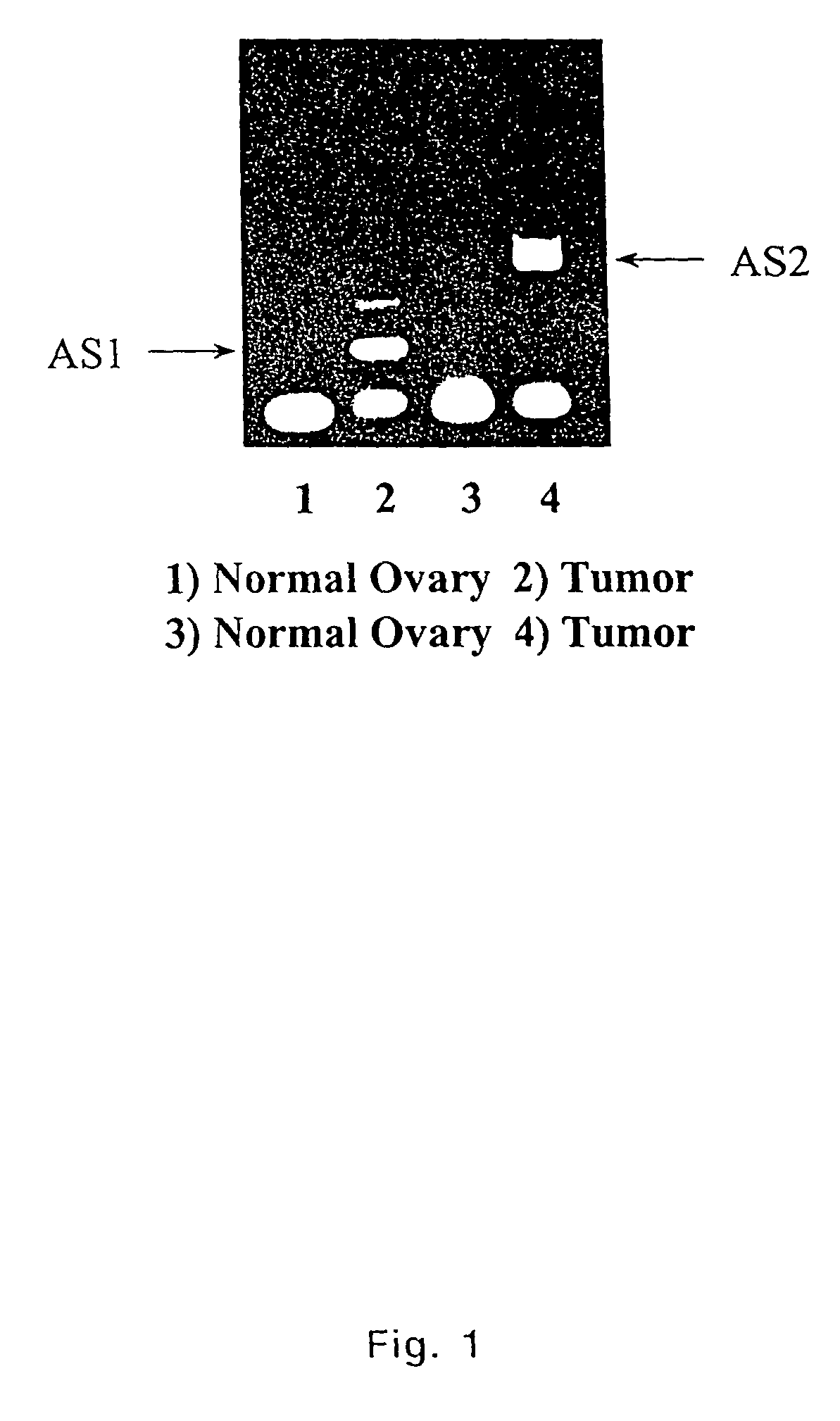Extracellular serine protease
a serine protease and extracellular technology, applied in the field of cellular biology and the diagnosis of neoplastic disease, can solve the problems of deficient screening methods in the early stages of the disease, and achieve the effect of improving the screening
- Summary
- Abstract
- Description
- Claims
- Application Information
AI Technical Summary
Benefits of technology
Problems solved by technology
Method used
Image
Examples
example 1
Cloning and Characterization of TADG-14
Tissue Collection and Storage
[0072]Upon patient hysterectomy, bilateral salpingooophorectomy, or surgical removal of neoplastic tissue, the specimen was retrieved and placed it on ice. The specimen was then taken to the resident pathologist for isolation and identification of specific tissue samples. Finally, the sample was frozen in liquid nitrogen, logged into the laboratory record and stored at −80° C. Additional specimens were frequently obtained from the Cooperative Human Tissue Network (CHTN). These samples were prepared by the Cooperative Human Tissue Network and shipped on dry ice. Upon arrival, these specimens were logged into the laboratory record and stored at −80° C.
mRNA Isolation and cDNA Synthesis
[0073]Messenger RNA (mRNA) isolation was performed according to the manufacturer's instructions using the Mini RiboSep™ Ultra mRNA isolation kit purchased from Becton Dickinson. This was an oligo(dT) chromatography based system of mRNA is...
example 2
Peptide Ranking Analysis for Vaccine Candidates
[0095]For vaccine or immune stimulation, individual 9-mers to 11-mers of the TADG-14 protein were examined to rank the binding of individual peptides to the top 8 haplotypes in the general population (Parker et al., (1994)). Table 2 shows the peptide ranking based upon the predicted half-life of each peptide's binding to a particular HLA allele. A larger half-life indicates a stronger association with that peptide and the particular HLA molecule. The TADG-14 peptides that strongly bind to an HLA allele are putative immunogens, and are used to innoculate an individual against TADG-14.
[0096]
TABLE 2TADG-14 Peptide RankingSEQHLA TypePredictedID& RankingStartPeptideDissociation½No.HLA A0201 155QLLCGGVLV257.34217 215LLLLGGAWA171.86818 360GVLVGGNWV123.84619 461VLVGGNWVL111.67220 549ALFQGQQLL79.04121 610KTWMFLLLL75.33122 7131SLGSKVKPI23.99523 8122MLLQLRDQA15.31224 9124LQLRDQASL13.6242510170TLNCAEVKI10.43326HLA A0205 1124LQLRDQASL28.56025 210KTW...
example 3
TADG-14 Variant
[0097]Because members of the serine protease family are highly expressed and secreted by tumors, they offer potential targets for both diagnosis and therapy. While many of these enzymes are predominantly tumor produced, there is often some level of expression in a limited number of normal tissues. To further enhance the potential for more specific tumor diagnosis and targeting, it would be helpful to provide unique sequences which might be included in the enzyme families. The present example discloses a transcription variant of TADG-14. The TADG-14 variant includes unique intron sequence which could provide potential specificity to the recognition of TADG-14 in tumor.
[0098]Data presented above indicated TADG-14 overexpression in ovarian tumors. Kishi et al. confirmed the overexpression of KLK8 (Neuropsin / Ovasin), which was described as TADG-14 here, as highly overexpressed in the ascites fluid of ovarian cancer patients and presented at elevated levels in serum of 62%...
PUM
| Property | Measurement | Unit |
|---|---|---|
| pH | aaaaa | aaaaa |
| temperature | aaaaa | aaaaa |
| pH | aaaaa | aaaaa |
Abstract
Description
Claims
Application Information
 Login to View More
Login to View More - R&D
- Intellectual Property
- Life Sciences
- Materials
- Tech Scout
- Unparalleled Data Quality
- Higher Quality Content
- 60% Fewer Hallucinations
Browse by: Latest US Patents, China's latest patents, Technical Efficacy Thesaurus, Application Domain, Technology Topic, Popular Technical Reports.
© 2025 PatSnap. All rights reserved.Legal|Privacy policy|Modern Slavery Act Transparency Statement|Sitemap|About US| Contact US: help@patsnap.com



